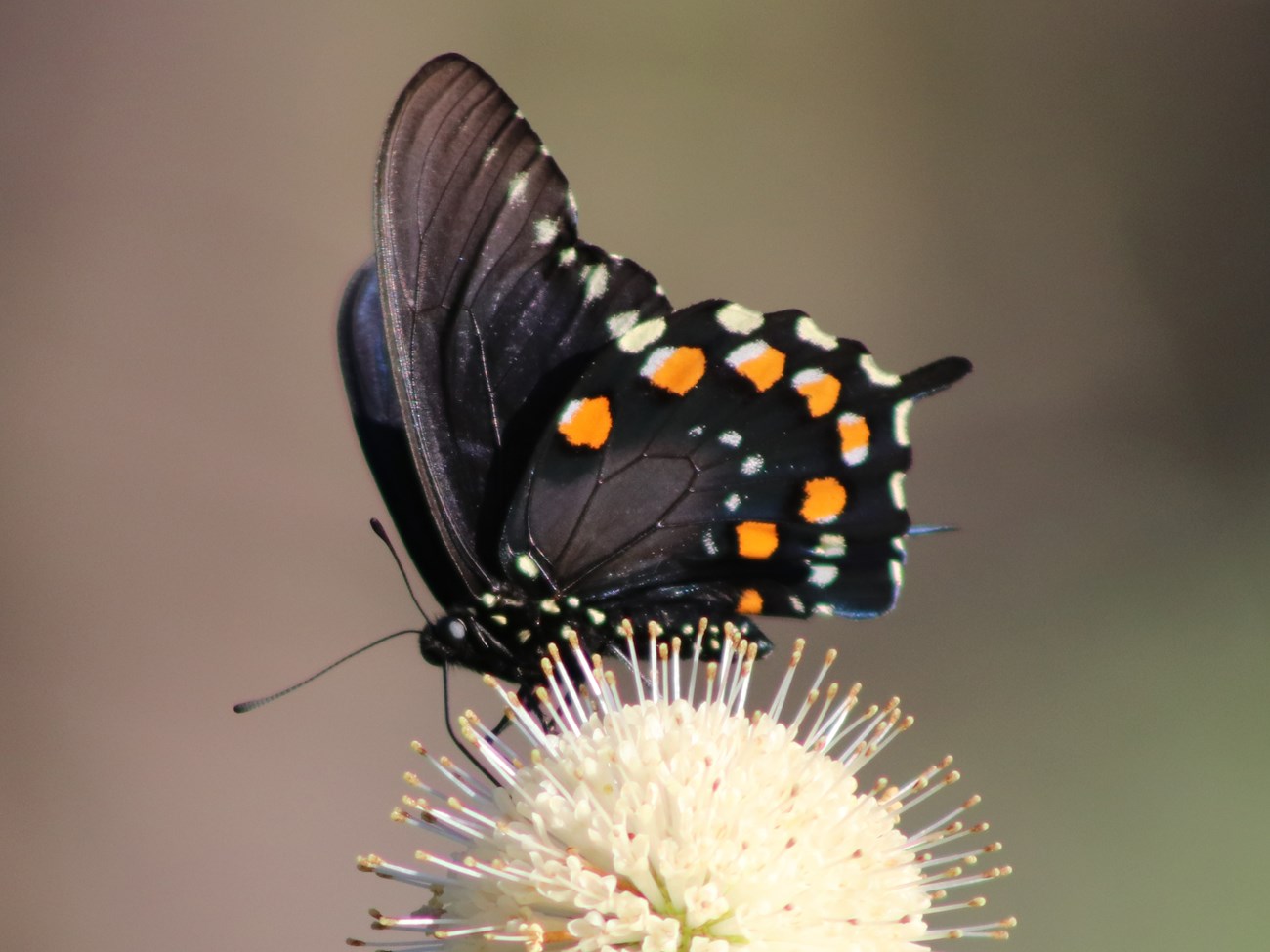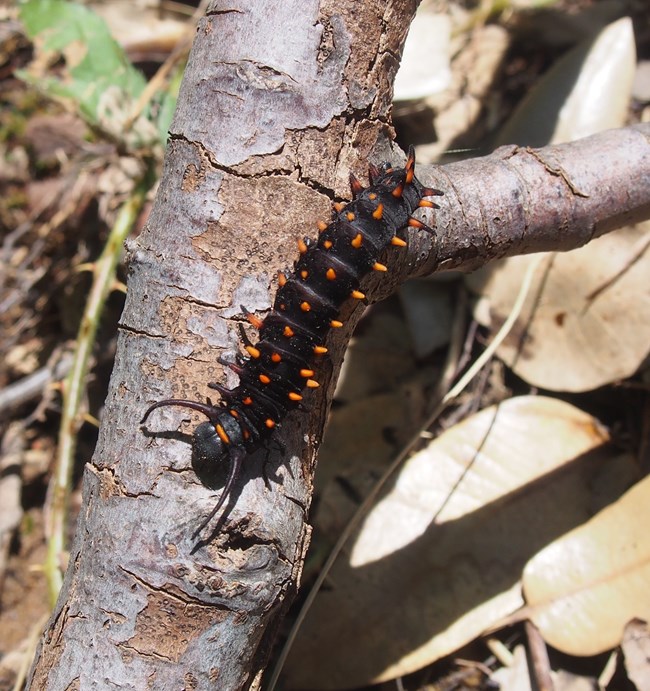Last updated: February 22, 2022
Article
California Pipevine Swallowtail

NPS/Kasey Rolih
General Description
The endemic California pipevine, with its fascinating flowers and fruit, was the Featured Creature of the month in April 2012. This month we bring you an insect that shares an intimate relationship with the woody vine, the unmistakable California pipevine swallowtail butterfly.
Battus philenor is another California endemic (family Papilionidae, order Lepidoptera). Also known as the blue swallowtail, the Aristolochia swallowtail, and by other names, it is widespread across the southeastern and central US into Arizona and Central America. The central and northern California population is isolated from populations in the rest of its range and as such is considered a separate subspecies, B. philenor hirsuta.
As larvae, caterpillars may grow to 5 cm (2 in); when full grown they are dark with large orange projections across the thorax and abdominal segments. The cryptic shell of the transitional pupal stage is either green or brown. Adult male butterflies have dark wings as seen from above with iridescent blue or blue-green hindwings. Light spots are present on the edges of both fore and hindwings, with seven bright orange spots near the edge of wing undersides. White spots fleck the sides of the dark abdomen. Female adult butterfly coloration is similar to males but less shiny. Wingspread is 7–13 cm (2.75–5 in).
Life Cycle
Like many insects, California pipevine swallowtails display complete metamorphosis: the egg, an active and hungry caterpillar stage, a pupal stage, and the final adult stage as a butterfly.
In the spring to early summer, small, bright orange eggs are laid on the leaf undersides of the pipevine plant so the larvae can begin to feed immediately. Egg-laying is timed with the growth of the pipevine, which usually ends in June, but can vary. The pupal stage occurs when the full grown caterpillar retreats into a shell to begin its metamorphosis into a butterfly. Though not well understood, the timing and duration of this stage seems to be influenced by a combination of day length and temperature. The number of broods per year can vary from one to many.
Behavior and Feeding
During mating, males take moisture and nutrients from mud and transfer some of the nutrients to the female. After the eggs hatch, larvae begin feeding on the tender young shoots of the California pipevine. While eating, they ingest chemicals from the plant, including aristocholic acids that make the caterpillar toxic to eat. A tough outer skin helps deter predators too. The toxic acids remain present at all life stages. At first, the young larvae feed in groups but are solitary later on, as defensive mechanisms develop. When fully grown, larvae leave the host plant to find a suitable site to pupate. After emerging as butterflies, adults drink nectar from many plants, including buttonbush, asters, lupines, California buckeye, and even the nonnative yellow star thistle, if nothing else is available.

NPS/Eric Dinger
Habitat and Predators
California pipevine swallowtails use a variety of open habitats, including woodlands, woodland edges, streamsides, and chaparral. Natural enemies include birds, parasitic wasps, ants, ladybugs, and fungal diseases.
Conservation
California pipevine swallowtails are doing fine, but there is concern that nonnative species of pipevine planted to attract adults could inhibit feeding by the larvae, which find anything but the California pipevine unpalatable.
Fun facts
- Aposematism, or warning coloration, is an adaptation used by many insects to deter predators. The bright orange markings on adult and larval California pipevine swallowtails serve to warn predators of their toxicity.
- Many butterflies have mimics, including other swallowtails, but not the California pipevine swallowtail. Molecular studies indicate that it has not lived here long enough for mimics to evolve.
- Diapause in swallowtails is a state of dormancy in the pupal stage that allows an individual to stay in a quiet state for months.
- Chico State’s entomology club has adopted the California pipevine swallowtail as its mascot!
Where to See
Whiskeytown NRA is the only Klamath Network park to have California pipevine swallowtails.
More Information
Art Shapiro's Butterfly Site
Download a pdf of this article.
Prepared by Kasey Rolih, Southern Oregon University/National Park Service
NPS Klamath Inventory & Monitoring Network
Southern Oregon University
1250 Siskiyou Blvd
Ashland, OR 97520
Featured Creature Edition: August 2019
